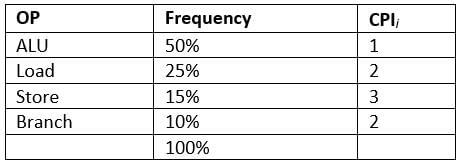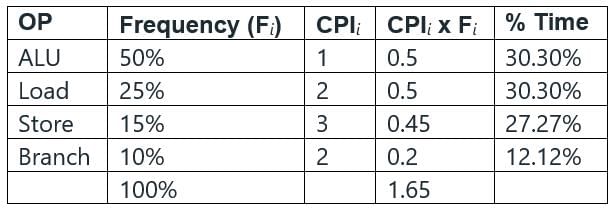Test: Computer Organisation & Architecture - 1 - Computer Science Engineering (CSE) MCQ
10 Questions MCQ Test - Test: Computer Organisation & Architecture - 1
A stack-based CPU organization uses_______ address instructions
Consider the following table:

Which of the following is true about the average CPI of the above given table?

Which of the following is true about the average CPI of the above given table?
A processor has 300 distinct instructions and 70 general-purpose registers. A 32-bit instruction word has an opcode, two register operands, and an immediate operand. The number of bits available for the immediate operand field is_____
Permanent Memory of a computer is known as-
The first instructor of bootstrap loader program of an operating system is stored in ____________.
______ is the fastest to read from and write to than the other kinds of storage in a computer.
Which of the following is NOT one of the types of buses?
Network of Communication protocol is formed by one master and ___ slaves with a unique address.
Which of the following statements is/are true?




















